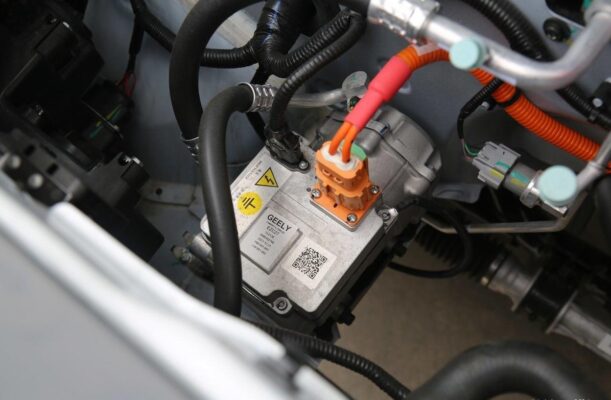The high-temperature operation test of the power battery system holds significant importance in evaluating the performance and reliability of these crucial components in demanding high-temperature environments. As power batteries are integral to the functionality of various applications, especially in the realm of electric vehicles and energy storage systems, understanding their behavior under extreme temperatures is essential for ensuring safe and efficient operation.

The primary purpose of this test is to assess how the power battery system performs when exposed to elevated temperatures that may be encountered in real-world scenarios. This could include situations such as operation in hot climates, during prolonged periods of high-temperature weather, or in environments where heat generation from other components affects the battery. By subjecting the battery system to high temperatures, it is possible to determine its ability to maintain functionality, deliver consistent power output, and retain its capacity over time.
The test is typically conducted by placing the battery system in a specialized high-temperature chamber. This chamber is designed to accurately control and maintain a specific temperature range, simulating the harsh conditions that the battery may encounter in actual use. Alternatively, a hot plate can be used for heating, although this method may not provide as precise temperature control as a dedicated chamber.

During the test, a comprehensive set of parameters are closely monitored and recorded. Temperature is, of course, a key parameter, as it directly affects the performance of the battery. High-precision temperature sensors are used to measure the temperature at various points within the battery system, including the surface of the cells, the battery pack enclosure, and key components such as the battery management system.
Voltage and current are also crucial parameters to monitor. The voltage of the battery system provides an indication of its state of charge and overall health. Changes in voltage under high-temperature conditions can signal issues such as capacity degradation or internal resistance increase. Current monitoring helps to determine the power output and charging/discharging behavior of the battery. Abnormal current fluctuations may indicate problems with the battery’s electrochemical processes or electrical connections.

Capacity attenuation is another important aspect to track. As the battery is exposed to high temperatures, its capacity may gradually decrease over time. This can be measured by periodically discharging the battery under controlled conditions and comparing the amount of energy that can be delivered to its original capacity. By monitoring capacity attenuation, it is possible to evaluate the long-term durability and lifespan of the battery system in high-temperature environments.
ለምሳሌ, consider an electric vehicle operating in a hot desert climate. The power battery system in such a vehicle will be subjected to high temperatures both from the external environment and from heat generated during operation. By conducting a high-temperature operation test in a laboratory setting, engineers can simulate these conditions and determine how the battery system will perform over time. This information can then be used to optimize the design and control strategies of the battery system to ensure reliable operation in real-world applications.

The high-temperature environment can have a wide range of adverse effects on the power battery system, posing significant challenges to its performance and safety. One of the most notable impacts is the acceleration of capacity attenuation. As the temperature rises, the chemical reactions within the battery cells occur at a faster rate, leading to a more rapid degradation of the active materials and a decrease in the battery’s capacity to store and release energy.
In addition to capacity loss, high temperature also causes an increase in internal resistance. The internal resistance of a battery represents the opposition to the flow of electrical current within the battery. As the internal resistance increases, more energy is dissipated as heat during charging and discharging, reducing the overall efficiency of the battery system. This can lead to reduced power output capacity, shorter driving ranges in electric vehicles, or reduced runtime in energy storage applications.

በተጨማሪም, high temperature poses significant safety risks to the battery system. Thermal runaway is a major concern, where a self-sustaining chain reaction of heat generation and temperature increase can occur within the battery. This can lead to overheating, venting of gases, and in extreme cases, fire or explosion. High temperatures can also cause damage to the battery’s insulation materials, increasing the risk of electrical shorts and other electrical failures.
ለምሳሌ, if a power battery system is exposed to prolonged high temperatures due to improper cooling or overloading, the risk of thermal runaway increases significantly. This can have disastrous consequences, not only for the battery itself but also for the surrounding equipment and personnel. ስለዚህ, understanding the impact of high temperature on the battery system is crucial for implementing effective safety measures and preventing potential disasters.

In high-temperature operation tests, a set of well-defined evaluation indicators are used to assess the performance and safety of the power battery system. These indicators provide a comprehensive understanding of how the battery system behaves under high-temperature conditions and help to identify areas for improvement.
Temperature response is a key evaluation indicator. This involves monitoring the temperature changes and stability of the battery system in high-temperature environments. The ability of the battery to maintain a relatively stable temperature within a safe operating range is essential for its long-term reliability. Rapid temperature fluctuations or excessive heating can indicate problems with the battery’s cooling system or internal heat generation.

Capacity attenuation is another important metric. Measuring the capacity loss of the battery system under high-temperature conditions provides insights into its life characteristics and durability. A significant reduction in capacity over a short period of time may indicate poor thermal stability or degradation of the battery cells.
Battery internal resistance is also closely monitored. The change in internal resistance of the battery system in high-temperature environments can have a significant impact on its power output capacity. An increase in internal resistance can lead to reduced efficiency and shorter battery life. By measuring internal resistance, it is possible to assess the health of the battery and predict potential failures.

Safety performance is a crucial evaluation indicator. This includes observing the safety performance of the battery system during high-temperature operation, such as temperature control and the risk of thermal runaway. The battery system should have effective thermal management strategies in place to prevent overheating and ensure safe operation. በተጨማሪም, measures such as overvoltage protection, overcurrent protection, and thermal insulation should be evaluated to minimize the risk of safety incidents.
ለምሳሌ, in a high-temperature operation test of an electric vehicle battery system, the temperature response of the battery pack may be monitored using multiple temperature sensors placed at different locations. The capacity attenuation can be measured by periodically discharging the battery and comparing the results to its initial capacity. The internal resistance can be calculated by measuring the voltage and current during charging and discharging cycles. Safety performance can be evaluated by observing the battery’s behavior under extreme temperature conditions and checking for any signs of overheating or thermal runaway.

D. Implementation and analysis of results
The implementation of high-temperature operation tests requires careful planning and execution to ensure accurate and reliable results. The test should be carried out according to a predefined protocol that specifies the temperature range, duration of exposure, and measurement intervals.
During the test, continuous monitoring and recording of relevant data are essential. This includes temperature, voltage, current, capacity attenuation, and any other parameters of interest. The data should be recorded at regular intervals to capture the dynamic behavior of the battery system under high-temperature conditions.
Once the test is completed, the results need to be analyzed to gain insights into the performance and safety of the battery system. This analysis can involve plotting temperature curves, calculating capacity attenuation rates, analyzing internal resistance changes, and evaluating safety performance.

By analyzing the test results, it is possible to determine the high-temperature adaptability of the battery system. This includes understanding how well the battery can withstand high temperatures without significant degradation in performance or safety. The capacity attenuation trend can provide information about the long-term durability of the battery under high-temperature conditions. The temperature control strategy can be evaluated to determine if it is effective in maintaining the battery within a safe operating temperature range.
According to the analysis results, targeted improvements can be made to the design and control strategy of the battery system. This could include enhancing the cooling system, optimizing the battery chemistry for better thermal stability, improving the battery management system to better monitor and control temperature, or implementing safety features to prevent thermal runaway.

ለምሳሌ, if the analysis reveals that the battery system experiences excessive capacity attenuation at a certain temperature, engineers may consider redesigning the battery pack to improve heat dissipation or using materials with better thermal resistance. If the internal resistance increase is a concern, efforts can be made to optimize the electrical connections or improve the battery’s electrochemical performance.
በማጠቃለያው, the high-temperature operation test of the power battery system is a critical tool for evaluating its performance and reliability in extreme temperature environments. By understanding the impact of high temperature on the battery system and using appropriate evaluation indicators, it is possible to gain valuable insights into its behavior and make targeted improvements to enhance its high-temperature working ability and safety. This not only benefits the development and application of electric vehicles and energy storage systems but also contributes to the overall progress of sustainable energy technologies.